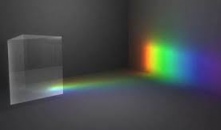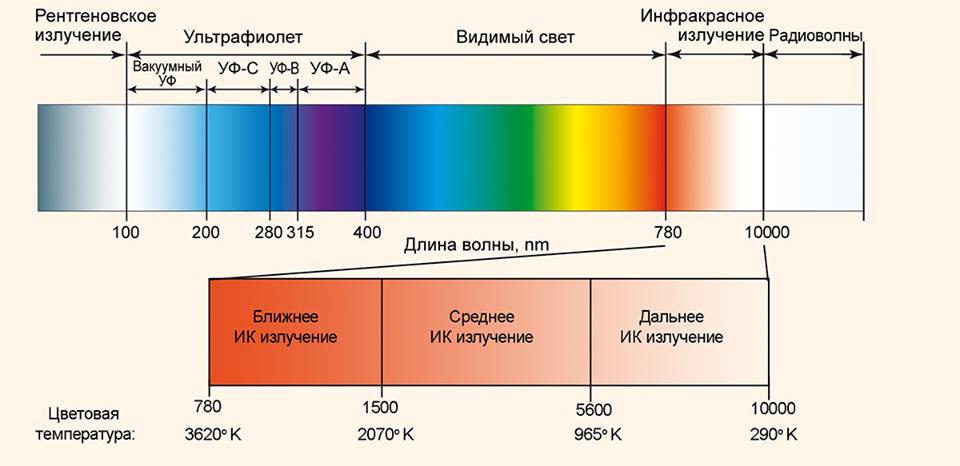History of development of the IR heating

Opening of infra-red rays.
The existence of invisible rays that are able to carry and give out warmth was assumed long before the discovery of methods and, most importantly, tools for the scientific proof of the origin of these rays. The first attempts to prove that invisible heat radiation is real can be found in "Chemical Treatise on Air and Fire" by Carl Scheele, who has dedicated a chapter of his work "radiant heat" in 1777, but his studies were limited up to the simple observations and did not include any practical proofs. After a bit more than 20 years, in the early 1800s, William Herschel has discovered an interesting feature of the glass of different colors. To be precise, each piece of glass, depending on the color filter, was able to absorb light and heat in different ways. The scientist got interested and decided to hold a simple but very important experiment that initiated the study of the infrared rays. He wanted to find out the distribution of the warmth along the spectrum of sunlight which comes up when a light goes through a prism. While moving a special thermometer into the different color rays of the sun spectrum, Herschel found out that temperature increases if when moving from the violet zone to the red one. Thus, there was an assumption that at the end of the red luminous radiation that "invisible" thermal radiation begins. On the 27th of March 1800 and also a month later Herschel performed with the lecture at the meeting of the Royal Society of London where he presented the results of 20 experiments to the public that helped him to officially fix to very important discoveries:
1. The invisible to the human eye rays beyond the spectrum of the red light that produce more warmth than all the visible rays were open.
2. These "beyond" rays reflect and deflect in the same way as the luminous ones do.
According to Thomas Young, this Herschel's discovery was the most important one since Newton.
First research of the unique features of IR radiation
William Herschel initiated numerous experiments connected with the searches of the limit of thermal radiation. Herschel's discovery had been completely confirmed and a huge number of physics all around the world started their own research with the use of the much more modern measurers of the temperature. It is worth mentioning a french scientist Becquerel that introduced a well-known nowadays concept of "infrared rays". A great contribution to the study of this phenomenon was made by M. Melloni who devoted his life to the study of the infrared light spectrum. He found out:
1. Infrared rays may easily go through different amounts of water;
2. Different materials have their own characteristics of absorption of infrared radiation and the way it goes through them, he named this characteristic diathermancy;
3. The same object does not absorb and let IR waves of the different sources go through it in the same way
4.The quantitative amount of the IR rays in the different sources is very diverse, up to the point that some of them are completely absent in some sources.

The scientist Ampere has established another important feature of infrared radiation – owing to his faith in the idea of the unity of the forces of nature, he concluded that the thermal and light rays have a common origin, and the differences in the way they go through the objects is a result of the difference in their lengths. It was finally confirmed by Knoblauch in 1848 through several research cases that were held step by step. These cases studied the features of infrared rays. Thus, a modern statement about the similarity of the infrared radiation with the sun radiation has been proven more than 150 years ago.
During the later years, the attention of the researchers was focused on determining the wavelength of infrared rays. Thanks to these studies the infrared part of the spectrum is now usually divided into four parts: the near (λ = 0,76 ... 3 mm), medium (λ = 3 ... 6 mm), far (λ = 6 ... 15 mm) and very far (λ = 15 ... 1000 mm).
20th century – the beginning of the practical use of IR radiation
Since the beginning of the XX century, infrared radiation band started to be used as a solution to a variety of practical tasks and problems. IR spectroscopy was carried out - a method for detecting various chemical compounds by observing the reaction of compounds to radiation. What is also worth mentioning is the fundamental researches and theories made by german scientist Gustav Kirchhoff, who paid great attention to the theory of thermal radiation of infrared waves. He laid the groundwork for the practical use of infrared emitters as the source of warmth and heating.
Considerable attention was paid to the influence of infrared rays on the human body. Studies have shown that infrared radiation is able to improve blood circulation, it has a soothing effect, and the surgical operations carried out under the infrared light are better tolerated by patients, since the cell regeneration goes much faster.
The first radiant heating system with water as a heat transfer agent was developed in 1906 by an Englishman Barker. However, the use of infrared radiation for heating equipment was offered even earlier by a Russian engineer Yachimovich. Also, the popularity of infrared rays has increased after Mr. Ford began to use such radiation in order to make the colored cars dry faster. In Europe, these useful properties of infrared emitters were quickly appreciated and already in 1933 the first infrared heaters have been patented. Further, technology has evolved, and within 15 years there was a first ceramic infrared heater, and in 1969 the company Noirot released infrared heater, which didn't need much time for a start-up and was able to heat the room quickly.
Thus, humanity has obtained another undeniably useful and profitable source of heat, which is today confirmed to be the most secure and economical equipment for heating a wide variety of rooms and territories.
